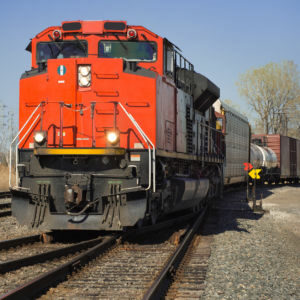There’s a pretty good rule in life regarding politics: Don’t be like California. This might seem flippant, but the mountain of self-contradictory policy-making has grown so jagged that it’s impossible to ignore.
California frequently portrays itself as the nation’s leader in tackling climate change. Yet, there’s a reason that Texas — not exactly known as a climate-friendly state — is decarbonizing its energy system faster. California pursues policies that sound good rather than do good.
Do you want examples? Truthfully, it’s hard to know where to start. In the last few years, California has been at risk of shutting down its last emissions-free nuclear plant, which would be replaced with fossil fuels. Diablo Canyon nuclear power station was saved at the last minute amid a global energy crisis, but it was not for lack of trying by California environmentalists and lawmakers. The plant is still on course to be shuttered in 2025, while Californians suffer the highest electricity prices in the nation and routine rolling blackouts.
In a similar self-own, the Golden State has been incapable of getting its wildfire problem under control. While the 2021 wildfire season offset the state’s emissions reductions over the last decade, lawmakers still refuse to implement common-sense reforms that would remove forest overgrowth, implement preventive burns, and reduce the risk of manmade fires. And let’s not forget when Gov. Gavin Newsom proudly announced that the state is banning internal combustion engines by 2035 and the next day asked electric vehicle owners to stop charging their vehicles due to grid problems.
There’s truly no shortage of examples that prove the point. But California is the gift that keeps on giving. Allow me to pick on the most recent, particularly egregious example of Golden State incompetence.
Recently, the California Air Resources Board (CARB) published a regulation known as the “In-Use Locomotive Rule” that would mandate the state’s locomotive fleet, numbering about 25,000 trains, to be replaced with zero-emissions locomotives. Of course, as might be expected from a California regulatory body, the bureaucrats at CARB failed to realize that the zero-emissions locomotives they seek aren’t commercially available. While the industry appears entirely on board with pursuing sustainability progress, having already implemented anti-idling systems, fuel optimization technology, and the use of renewable fuels, California’s latest command-and-control mandate puts the cart before the locomotive. Despite significant industry investment, an economically feasible path to zero-emissions locomotives doesn’t exist yet. As a result, the Association of American Railroads and the American Short Line and Regional Railroad Association have filed a lawsuit that would overturn these inane rules.
Mandating something doesn’t mean that it will actually happen. Yet, what will happen is an enormous economic burden on the rail industry, as CARB seeks to levy penalties on railroads that don’t comply with the uncompliable rules. As with so many terrible policies California politicians pursue, the rule will have a major impact on other states. America’s railroad system is nationally integrated, meaning locomotives constantly cross state borders. As a result, even CARB has acknowledged that its rule will force many companies operating in the state to change their entire fleet nationwide, with enormous price tags attached. The costs of bad policy in California will be passed on to consumers nationwide.
The bad news doesn’t stop there. In a typically California plot twist, the move will probably be a net negative for the environment. As small-business rail lines risk going bankrupt and prices rise for consumers, what is likely to happen is a shift to more trucks to meet shipping needs. Less fuel-efficient trucks release particulate matter into the surrounding air and water due to tire wear and add to California’s already-congested roads. Trains are already some of the most effective and low-carbon ways to transport goods; the rail industry is responsible for less than 2 percent of transportation emissions while accounting for 28 percent of goods transported. Any policy that reduces our ability to transport goods via trains will likely have a negative environmental effect.
Disappointingly, the Environmental Protection Agency recently approved the rule. This means that states will bear the consequences of California’s bad decisions. At the end of the day, policy matters affect people’s lives. California’s misguided attempt to regulate existing locomotives out of existence is technologically unfeasible, will increase costs on consumers everywhere, and won’t even have the hoped-for environmental benefit. That’s par for the course for California bureaucrats, but it’s a cautionary tale for the rest of the country.


